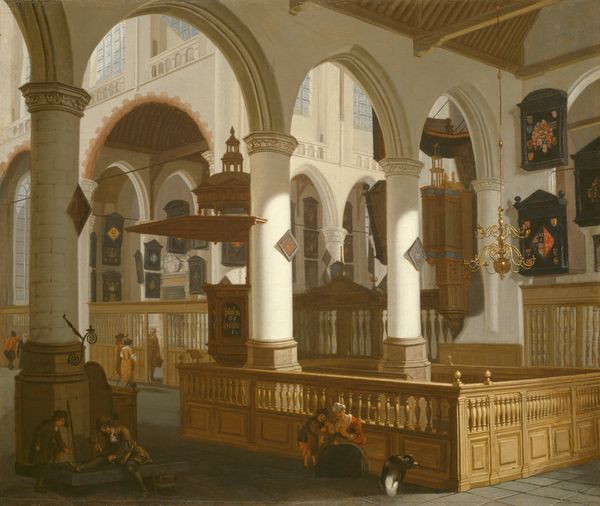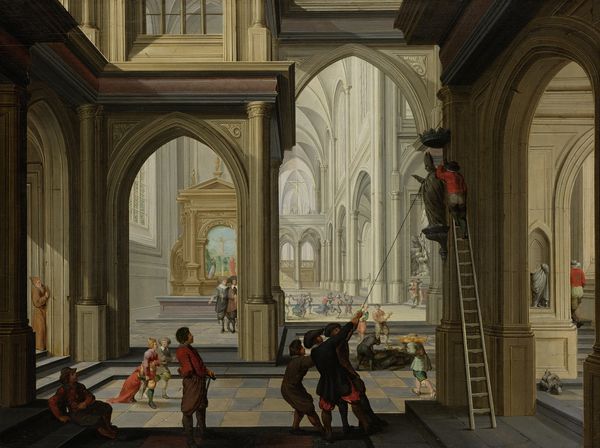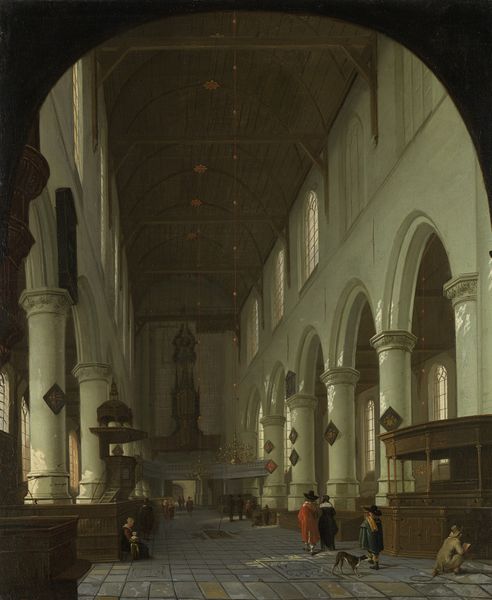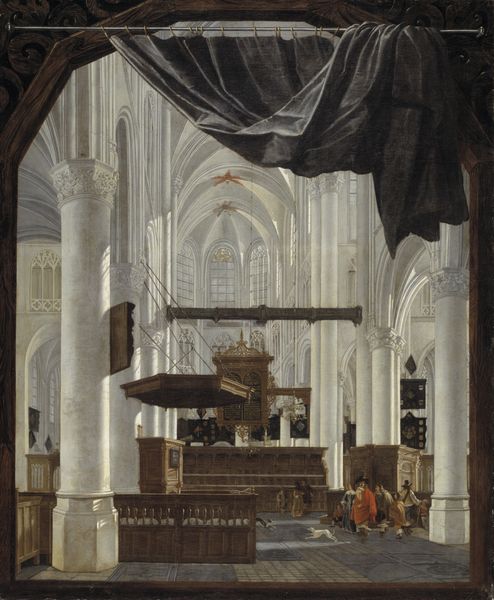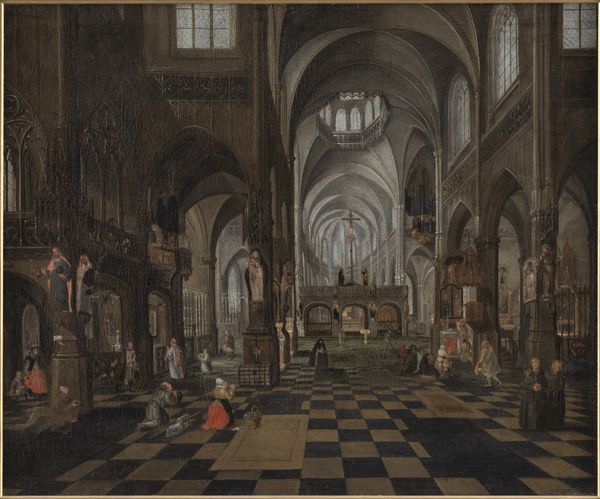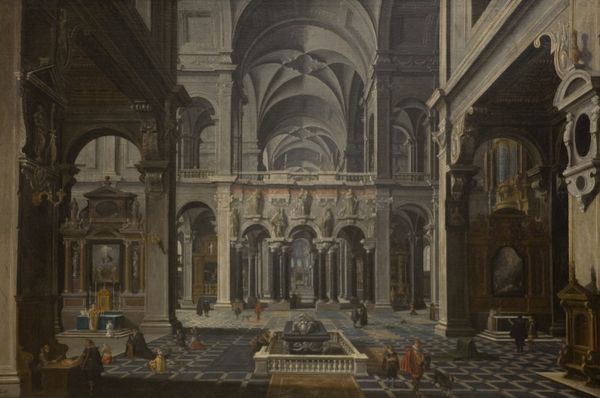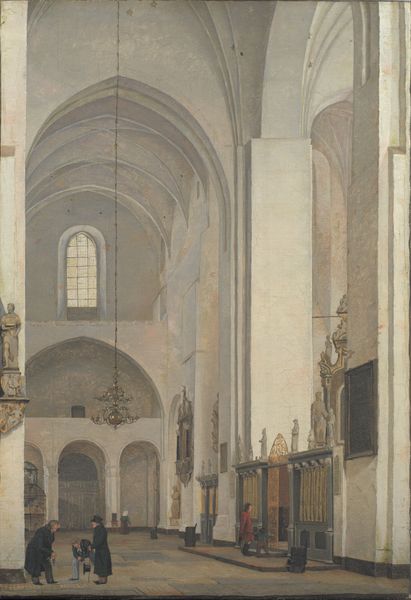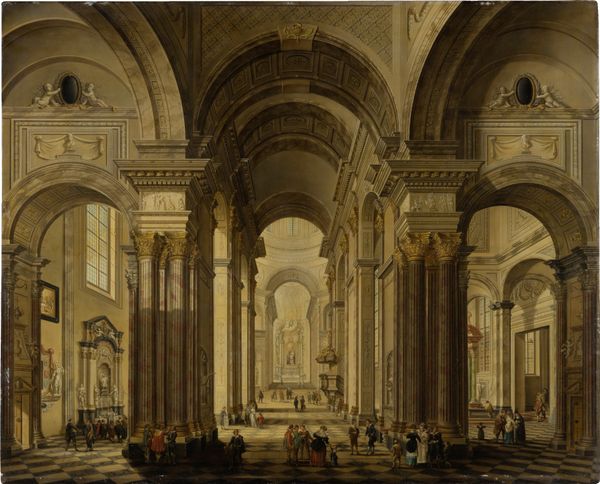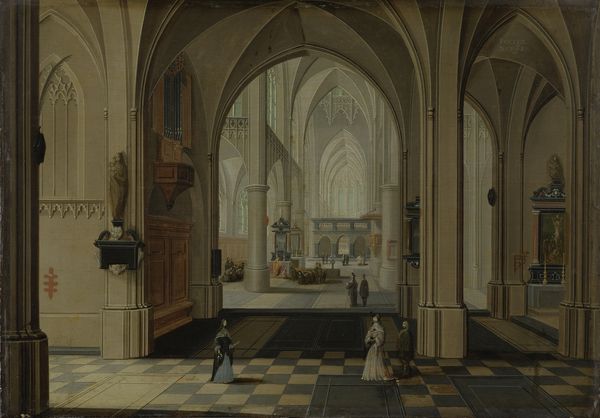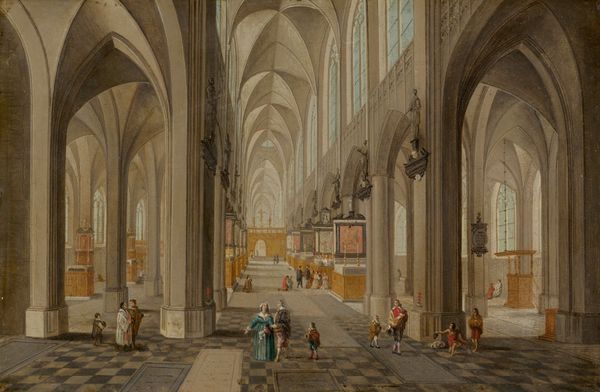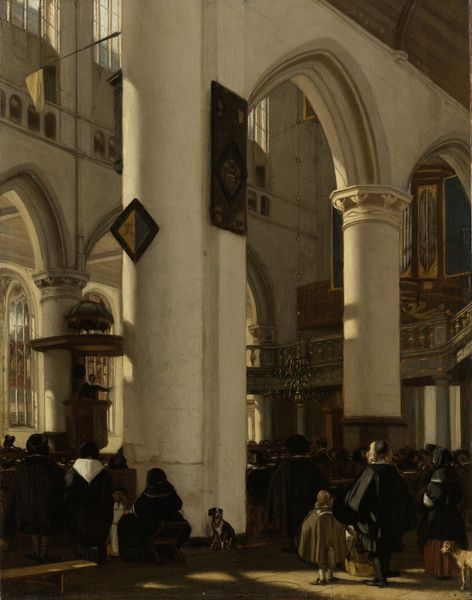
painting, oil-paint, architecture
#
baroque
#
dutch-golden-age
#
painting
#
oil-paint
#
perspective
#
traditional architecture
#
cityscape
#
genre-painting
#
architecture
#
realism
Dimensions: support height 48.7 cm, support width 40.2 cm
Copyright: Rijks Museum: Open Domain
Curator: This is Gerard Houckgeest’s "Interior of the Oude Kerk in Delft," painted in 1654, rendered in oil on canvas. What is your initial response to the work? Editor: That dramatic green curtain immediately catches the eye. Its velvety texture is rendered so vividly. But my attention keeps getting drawn back to those folks gathered in the lower-left – they appear in quiet conversation while others seem on their way. The daily activities juxtapose well with the imposing architectural interior. Curator: Indeed. Houckgeest's manipulation of perspective is masterful here, achieved through careful application of line and tone. The cool light streaming in through the tall windows draws the eye up and deeper into the vaulted space. Note the careful articulation of each structural element – the massive columns, the vaulted ceilings, and the arched windows – contributing to a sense of both grandeur and rationality. Editor: Precisely. You point out the architecture. The crafting of that impressive, towering pulpit commands attention; its construction must have involved immense amounts of labour from specialized artisans using specific tooling and materials. Do you think the choice and source of materials in building these large spaces can provide insights into that time period? Curator: Undoubtedly. Considering the semiotic value embedded within each construction choice elevates our understanding. Take the floor tiles. Their geometric pattern functions on a purely aesthetic level, but one could also argue that they symbolize order and piety, which mirrors Dutch Calvinist values prevalent at that time. The green curtain then acts as a kind of barrier that both hides and reveals the space it conceals. Editor: Yes, the curtain's rich colour contrasts starkly against the pale interior of the church, adding a note of sumptuousness and visual depth. As an added benefit, viewers are treated to seeing a range of textures throughout, from smooth stone to stained glass. Seeing paintings such as this causes us to reconsider and respect the skills and resources required in artmaking. Curator: Looking at the architecture this way also reflects something essential in Houckgeest's strategy as an artist. What seems like realistic depiction reveals complex arrangement and deliberate framing to elicit meaning and instill reflection on cultural values through perspectival space. Editor: The painting then leaves us contemplating labour, commerce, belief, and the intimate, intertwined relationship among these vital threads that form a historical network. Curator: An observation I would enthusiastically agree with! Editor: So would I.
Comments
rijksmuseum about 2 years ago
⋮
Gerrit Houckgeest specialized in church interiors and the use of perspective. With great attention to detail, he has here captured how the sunlight, pouring through the stained-glass windows, casts coloured dots on the column in the middle. The painted green curtain is a witty illusionistic device, imitating the 17th-century custom of protecting paintings from light and dust with a curtain.
Join the conversation
Join millions of artists and users on Artera today and experience the ultimate creative platform.
